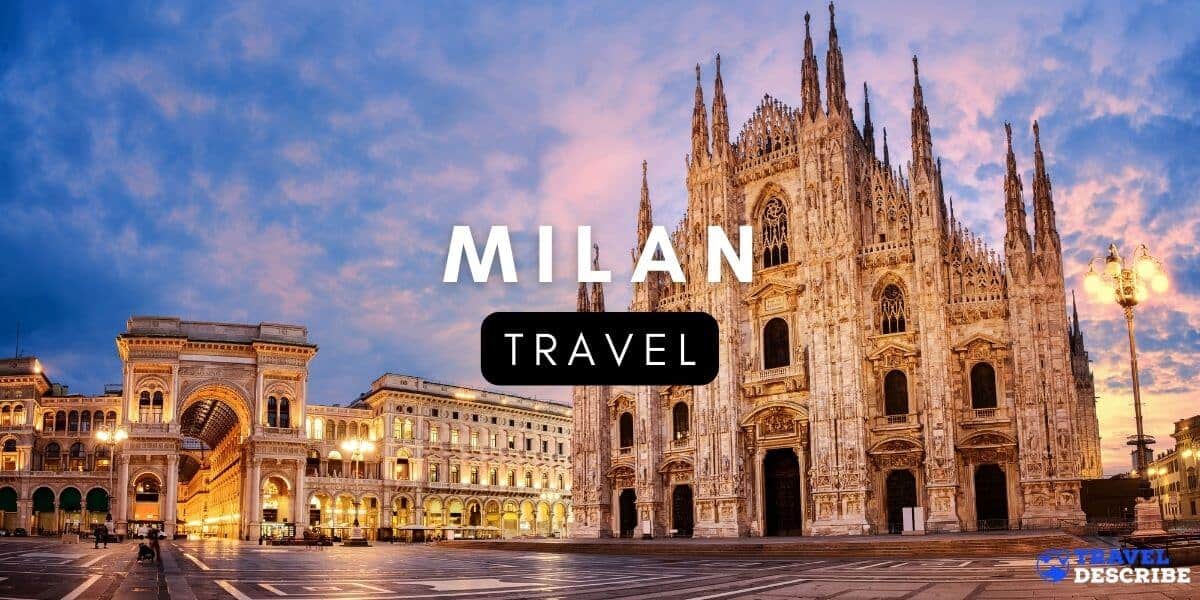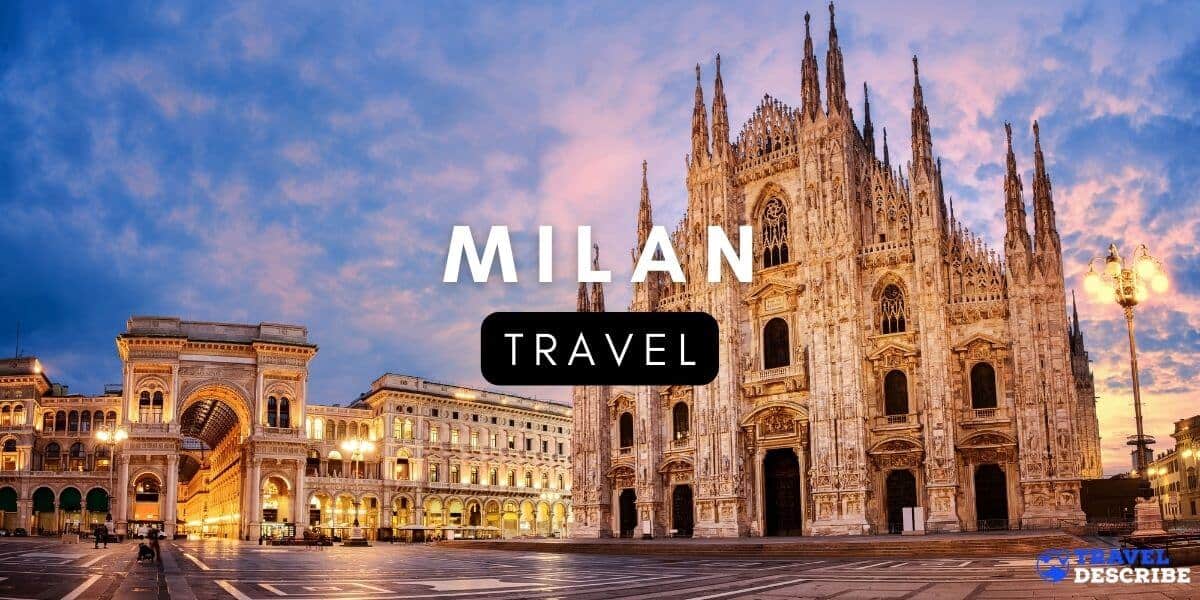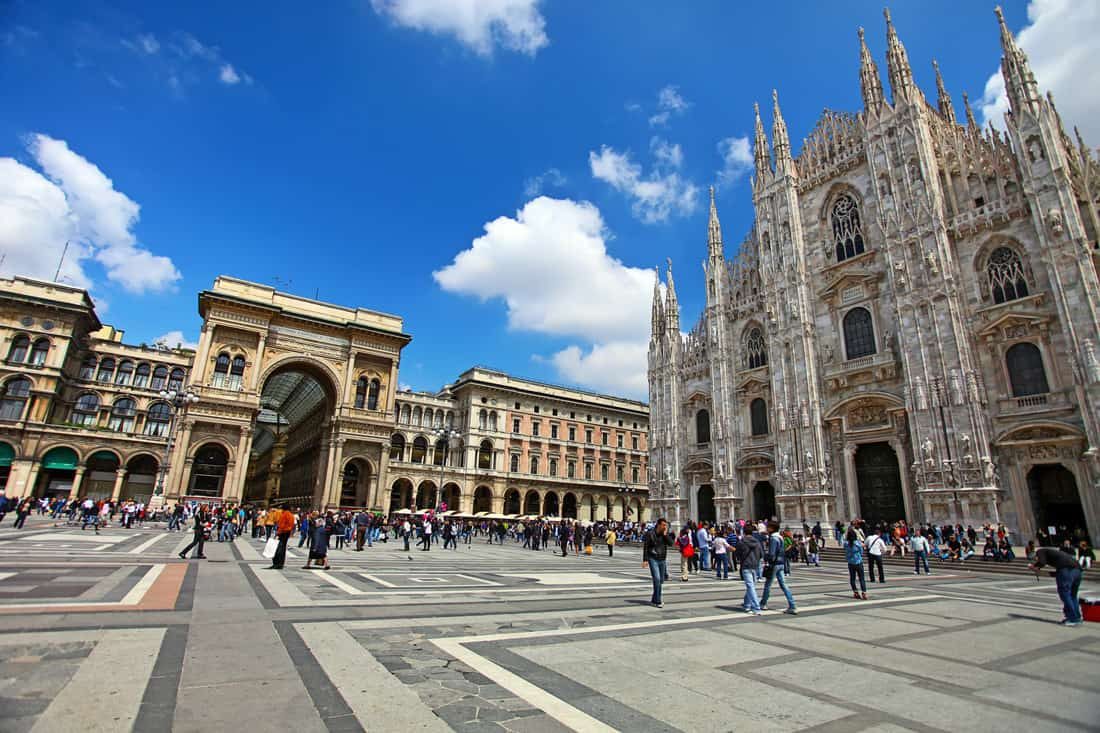
Milan, the pulsating heart of Italian fashion, design, and finance, is a city that effortlessly blends historical grandeur with contemporary dynamism. Beyond its glamorous facade lies a rich tapestry of art, culture, and culinary delights, waiting to be discovered. Whether you’re drawn by the allure of haute couture, the masterpieces of Renaissance art, or the simple pleasure of a perfect espresso, Milan promises an unforgettable travel experience. This comprehensive guide will equip you with everything you need to plan your perfect Milanese adventure, from understanding its storied past to navigating its bustling streets.
A Glimpse into Milan’s Rich History: From Roman Roots to Renaissance Splendor
Milan’s history stretches back over two millennia, its strategic location making it a coveted prize for various empires. Founded by the Insubres, a Celtic tribe, it was later conquered by the Romans in 222 BC and became known as Mediolanum, meaning "in the middle of the plain." Under Roman rule, it flourished as a vital administrative and economic center, even serving as the Western Roman Empire’s capital for a period.

Related Articles about La Dolce Vita Awaits: Your Comprehensive Guide to Traveling to Milan:
- Seoul: A Metropolis Where Tradition Meets Tomorrow
- A Comprehensive Guide to Ho Chi Minh City: Exploring the Pearl of the Orient
- Sri Lanka: Paradise Found – A Guide to the Best Hotels and Unforgettable Experiences
- Edinburgh: A Majestic Sojourn – Discovering the Best Hotels Amidst History and Charm
- Land of a Thousand Lakes and Northern Lights: Unveiling Finland’s Top Attractions
The medieval era saw Milan rise to prominence as a powerful city-state, often battling its neighbors. The Visconti and Sforza families, in particular, left an indelible mark on the city’s architecture and artistic heritage. It was during this period that many of Milan’s iconic landmarks, including the majestic Duomo, began to take shape. The Renaissance, a golden age for Milan, witnessed the patronage of the arts and sciences, attracting brilliant minds like Leonardo da Vinci, who spent his final years in the city and gifted it his masterpiece, "The Last Supper."
Despite periods of foreign rule, including French and Austrian dominance, Milan always retained its spirit of innovation and progress. The 19th century brought unification to Italy, and Milan emerged as a leading industrial and cultural hub. Today, it stands as a testament to its resilient past, a city where ancient cathedrals stand proudly alongside modern skyscrapers, and where centuries of artistic evolution are on full display.
Top Attractions: Unveiling Milan’s Treasures
Milan’s allure lies in its diverse range of attractions, catering to every taste and interest. Here are some of the must-see sights:
-
The Duomo di Milano: The undisputed icon of Milan, this breathtaking Gothic cathedral is the third-largest church in the world. Its intricate spires, adorned with countless statues, and its magnificent façade are a sight to behold. Ascend to the rooftop for panoramic views of the city and a closer look at the dazzling marblework. Allow ample time to explore the interior, including the stunning stained-glass windows and the treasury.
-

Galleria Vittorio Emanuele II: An architectural marvel and a bustling shopping arcade, the Galleria is often referred to as "Milan’s Drawing Room." Its stunning glass and iron roof, adorned with mosaics depicting the continents and allegorical figures, creates a dazzling atmosphere. Browse the high-end boutiques, enjoy a coffee at a historic café, or simply soak in the opulent surroundings. Don’t forget to perform the traditional bull’s spin on the mosaic bull for good luck!
-
Teatro alla Scala: One of the world’s most prestigious opera houses, La Scala is a temple of performing arts. Even if you’re not attending a performance, a visit to its museum is highly recommended. You can explore its opulent interiors, learn about its rich history, and admire costumes and memorabilia from legendary artists.
-
Leonardo da Vinci’s "The Last Supper": Housed in the refectory of the Convent of Santa Maria delle Grazie, this iconic fresco is a masterpiece of Renaissance art. Due to its fragility, access is strictly controlled, and advance booking (often months in advance) is essential. The experience of standing before this profound work is truly awe-inspiring.
-
Castello Sforzesco: This imposing fortress, once the residence of the Sforza dukes, now houses several important museums and art collections, including Michelangelo’s Rondanini Pietà. Wander through its courtyards, explore its ramparts, and immerse yourself in Milan’s ducal past.
-
Pinacoteca di Brera: Home to a remarkable collection of Italian Renaissance art, this gallery boasts masterpieces by Raphael, Caravaggio, and Bellini. The charming Brera district surrounding the Pinacoteca is also worth exploring, with its bohemian atmosphere, artisan shops, and charming trattorias.
-
Navigli District: Milan’s historic canal district comes alive in the evenings, transforming into a vibrant hub of bars, restaurants, and art galleries. Take a leisurely stroll along the canals, enjoy an aperitivo with the locals, and soak in the lively ambiance.
-
Quadrilatero della Moda (Fashion Quadrilateral): For the fashion-conscious, this exclusive district is a must-visit. Home to flagship stores of the world’s most renowned designers, it’s a paradise for window shopping and admiring cutting-edge fashion. Even if your budget doesn’t stretch to haute couture, the sheer artistry and craftsmanship on display are captivating.
Travel Tips for a Seamless Milanese Experience
To make the most of your trip to Milan, keep these practical tips in mind:
- Book in Advance: For popular attractions like "The Last Supper," the Duomo rooftop, and La Scala, booking tickets online well in advance is crucial to avoid disappointment.
- Embrace the Aperitivo Culture: Milanese aperitivo is a ritual. From around 6 pm to 8 pm, bars offer a drink that comes with a generous buffet of snacks. It’s a fantastic way to experience local life and enjoy a light pre-dinner meal.
- Learn Basic Italian Phrases: While many Milanese speak English, knowing a few basic Italian phrases like "Buongiorno" (Good morning), "Grazie" (Thank you), and "Per favore" (Please) will be greatly appreciated and enhance your interactions.
- Stay Hydrated: Especially during warmer months, carry a reusable water bottle. Many public fountains offer clean, potable water.
- Dress Appropriately: When visiting churches, ensure your shoulders and knees are covered out of respect. Milan is a fashion-forward city, so while there’s no strict dress code for general sightseeing, dressing smart can enhance your experience, especially when dining in upscale restaurants.
- Be Aware of Pickpockets: Like any major city, be mindful of your belongings, especially in crowded tourist areas and on public transportation.
- Tipping: Tipping is not as ingrained in Italian culture as in some other countries. Service charges are often included in restaurant bills. If you receive exceptional service, a small tip of 5-10% is appreciated.
- Pace Yourself: Milan is a city best savored. Don’t try to cram too much into one day. Allow time for spontaneous discoveries and moments of relaxation.
Accommodation Options: Finding Your Perfect Milanese Abode
Milan offers a wide spectrum of accommodation to suit every budget and preference:
- Luxury Hotels: For an opulent experience, consider hotels near the Duomo, Galleria, or in the Fashion Quadrilateral. These often offer exquisite service, fine dining, and prime locations.
- Boutique Hotels: These charming establishments often boast unique designs and a more intimate atmosphere, scattered throughout various neighborhoods like Brera and the Navigli.
- Mid-Range Hotels: You’ll find numerous comfortable and well-equipped hotels across the city, offering good value for money. Areas slightly outside the immediate city center but well-connected by public transport can offer more affordable options.
- Budget-Friendly Options: Hostels and guesthouses are excellent choices for solo travelers or those on a tighter budget. Look for options in areas like Isola or Porta Romana.
- Apartment Rentals: For longer stays or families, renting an apartment through platforms like Airbnb can provide a more authentic and flexible experience, allowing you to cook your own meals and feel like a local.
When choosing your accommodation, consider its proximity to the attractions you wish to visit and its accessibility to public transportation.
Transportation: Navigating Milan with Ease
Milan boasts an efficient and well-connected public transportation system, making it easy to get around:
- Metro (Metropolitana): The Milan Metro is the most convenient way to travel between major attractions. It’s clean, efficient, and covers most of the city. Purchase a single ticket or a day pass for unlimited travel.
- Trams and Buses: These provide excellent coverage for areas not reached by the metro and offer a more scenic way to see the city.
- Taxis: Taxis are readily available, but can be expensive. Use official taxi stands or book through reputable apps.
- Walking: Many of Milan’s most charming neighborhoods, such as Brera and the Navigli, are best explored on foot. Wear comfortable shoes!
- Cycling: Milan has a growing cycling culture, with bike-sharing schemes available. It’s a great way to explore at your own pace, especially along the canals.
- Trains: Milan is a major railway hub, with excellent connections to other Italian cities and international destinations. The main stations are Milano Centrale and Milano Porta Garibaldi.
Getting to Milan:
- By Air: Milan has three main airports:
- Milan Malpensa Airport (MXP): The largest and most international airport, located about 50 km northwest of the city. It’s well-connected by train (Malpensa Express) and bus services.
- Milan Linate Airport (LIN): Located closer to the city center, it primarily handles domestic and short-haul European flights. It’s accessible by bus and taxi.
- Bergamo Orio al Serio Airport (BGY): Often used by budget airlines, it’s located about 50 km northeast of Milan. Shuttle buses connect it to Milan’s central bus station.
Best Time to Visit Milan: Embracing the Seasons
Milan experiences four distinct seasons, each offering a unique charm:
- Spring (April to May): This is arguably the best time to visit. The weather is pleasant, with blooming flowers and comfortable temperatures perfect for sightseeing. Crowds are moderate, and you can enjoy outdoor activities without the summer heat.
- Summer (June to August): Milan can get quite hot and humid during the summer months. Many Italians vacation in August, so some smaller shops and restaurants might be closed. However, it’s a lively time with outdoor events and festivals.
- Autumn (September to October): Another excellent time to visit. The weather cools down, and the autumn foliage creates a beautiful backdrop. Fashion Week in September and the Milan Furniture Fair in April (though technically spring) draw significant crowds and offer a glimpse into the city’s creative pulse.
- Winter (November to March): Milan can be chilly and damp in winter, but it offers a different kind of magic. The Christmas markets are a delight, and the city’s indoor attractions, like museums and galleries, are perfect for escaping the cold. Prices can be lower during this period.
Consider your priorities when choosing your travel dates. If you’re a fashion enthusiast, the spring and autumn fashion weeks are prime times. If you prefer fewer crowds and pleasant weather, spring and early autumn are ideal.
Milan is a city that rewards exploration and immersion. By understanding its history, planning your visits to its iconic attractions, and embracing its unique culture, you’re well on your way to experiencing the true essence of "La Dolce Vita" in this captivating Italian metropolis. Prepare to be enchanted by its art, seduced by its style, and delighted by its flavors – Milan awaits!





